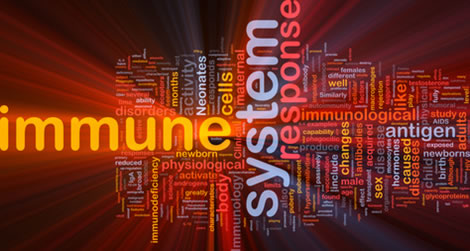Mannose is a pure, natural stereo isomer of glucose. Is found naturally in fruits such as apples, peaches, oranges, cranberries, blueberries and some plants, mannose develops naturally in the body. Also, mannose is available as a nutritional supplement, called D-mannose. The D-mannose sold in as a dietary supplement is extracted from the birch or beech trees. D-mannose is processed and eliminated by our bodies very quickly.
What Is a Urinary Tract Infection (UTI)?
Most urinary tract infections are bladder infections. Infection of the bladder is usually caused by Escherichia coli, a species of bacteria commonly found in the gastrointestinal tract. If you do not take care of a bladder infection, it can spread to kidneys. Bacteria may travel up the ureters to multiply and infect the kidneys. A kidney infection is called pyelonephritis. Kidney infection can cause permanent damage. Infection of the urethra can occur when gastrointestinal bacteria spread from the anus to the urethra. Escherichia coli is the bacterium found in some 85-90 percent of bladder infections. 10 % are caused by the Procteus, Klebsiella, Pseudomonas, Enterobacter; and less than 5 % are caused by the Staphylococcus aureus bacteria, chlamydia or enterococcus. Women tend to get more bladder infections than men. Women have a shorter urethra, which cuts down on the distance bacteria must travel to reach the bladder.
Medical Treatment
 Medical treatment of UTIs involves the use of antibiotics. While these drugs are usually effective, curing most infections, have some serious negative effects. These drugs kill off friendly bacteria living in the gastrointestinal (GI) tract, antibiotics can cause side effects, such as constipation, diarrhoea, and nausea. Also, the use of antibiotics promotes the development of bacterial species that are able to resist these drugs. Bacteria are very clever in their ability to mutate genes, making themselves immune to the effects of antibiotics. Bacteria that have become immune then pass this ability on to their offspring or other bacteria. If a bacterium carries several resistance genes, it is called multidrug resistant or, informally, a superbug.
Medical treatment of UTIs involves the use of antibiotics. While these drugs are usually effective, curing most infections, have some serious negative effects. These drugs kill off friendly bacteria living in the gastrointestinal (GI) tract, antibiotics can cause side effects, such as constipation, diarrhoea, and nausea. Also, the use of antibiotics promotes the development of bacterial species that are able to resist these drugs. Bacteria are very clever in their ability to mutate genes, making themselves immune to the effects of antibiotics. Bacteria that have become immune then pass this ability on to their offspring or other bacteria. If a bacterium carries several resistance genes, it is called multidrug resistant or, informally, a superbug.
D-Mannose and Urinary Tract Infection
D-Mannose does not kill bacteria. In contrast allows the bad bacteria to be easily flushed out of the body with the urine. A little amounts of D-Mannose are metabolized by our bodies; more than small amounts are excreted promptly into the urine. Various researchs has shown that 90% of D-mannose taken orally is excreted in the urine unchanged within 30-60 minutes. D-mannose is absorbed within the upper portion of the gastrointestinal tract. So it never gets anywhere near the intestines. In this way, it does not disturb the normal, healthy growth of bacteria in that area.
D-mannose prevents adhesion of pathogenic bacteria to tissues of the urinary tract and bladder. Is found in the interaction between D-mannose and the bacterium found in over 90% of all bladder infections, Escherichia coli. The reason that the escherichia coli are able to attach so strongly to the bladder wall is because our body also produces small amounts of mannose. There is an undisputed attraction between the sticky mannose receptors and the escherichia coli fimbria, and it is that same attraction that becomes essential in their removal. Once the Escherichia coli are weighed down in mannose rich urine they are quickly and simply expelled from the body during the next voiding leaving your bladder clear from infection. When taken by mouth relatively large quantities of D-mannose can cure more than 90% of all UTIs within 1 to 2 days. The molecular mechanism of the action of D-mannose on Escherichia coli is scientifically proven. In addition, literally tens of thousands of women working with natural medicine doctors have successfully applied this treatment to their won UTIs. In the USA, one doctor who has been using D-mannose in the treatment of cystitis is Dr. Michael Blue (Urologist). In a clinical trial he conducted with his patients, he found that 71% reported either symptoms improvement or to be completely free of their cystitis symptoms.
D-Mannose for UTI Dosage
D-mannose comes in a powder form to be stirred into liquid, or in a tablet form. Daily dose, start at 2.5ml to 5ml of the powder form in water every two to three hours. Or take two capsules of D mannose per day. Also, be sure to drink plenty of water to encourage the removal of harmful waste products. (Symptoms will clear up within a few days having taking D-mannose continuously but it is advisable to take for a little longer to make sure). Over 90 percent of all bladder and kidney infections are caused by Escherichia coli but a little rate of urinary tract infections result from other microorganisms and may require antibiotics.
D-Mannose Side Effects
In some cases, bloating and nausea can occur. There are anecdotal reports that some people with diabetes experience a transient increase in blood sugar rates. however the effect is not serious and never permanent, lasting only for the length of time mannose is used. In a similar way that D-mannose binds to bacteria it is also considered that D-Mannose may bind to sperm and prevent fertilization. The contraceptive effect appears to be short lived however. Further research is underway with a view to creating a D-mannose contraceptive. (what is a contraceptive? Is an umbrella term for several techniques and methods used to prevent fertilization or to interrupt pregnancy at various stages)
 Fucoidan is a sulfated polysaccharide found in brown algae; it has been shown to exhibit a number of biological effects, including anti-tumor effects. A French research study in 2002 showed that F-fucoidan can inhibit hyperplasia in rabbits. A Japanese research report in 2005 indicated that F-fucoidan can induce apoptosis in human lymphoma cell lines.
Fucoidan is a sulfated polysaccharide found in brown algae; it has been shown to exhibit a number of biological effects, including anti-tumor effects. A French research study in 2002 showed that F-fucoidan can inhibit hyperplasia in rabbits. A Japanese research report in 2005 indicated that F-fucoidan can induce apoptosis in human lymphoma cell lines. Animal studies and a couple of uncontrolled human studies have found that Modified Citrus Pectin may inhibit the spread of prostate cancer and
Animal studies and a couple of uncontrolled human studies have found that Modified Citrus Pectin may inhibit the spread of prostate cancer and  Nattokinase enhances the body’s natural ability to fight
Nattokinase enhances the body’s natural ability to fight  Studies indicate that Indole-3-Carbinol has potential value as a chemopreventive agent for breast cancer through its estrogen receptor modulating effect. There is also evidence to support the fact that I3C has a different mechanism of action than tamoxifen and that these two substances can be used synergistically. Indole-3-Carbinol initiates a series of reactions in the body that culminates in the elimination of estrogen. Researchers have observed that metabolism of estrogen occurs via one of two pathways: The ‘harmful’ metabolic pathway, 16 alpha-hydroxylation, or the ‘beneficial’ metabolic pathway, 2-hydroxylation.
Studies indicate that Indole-3-Carbinol has potential value as a chemopreventive agent for breast cancer through its estrogen receptor modulating effect. There is also evidence to support the fact that I3C has a different mechanism of action than tamoxifen and that these two substances can be used synergistically. Indole-3-Carbinol initiates a series of reactions in the body that culminates in the elimination of estrogen. Researchers have observed that metabolism of estrogen occurs via one of two pathways: The ‘harmful’ metabolic pathway, 16 alpha-hydroxylation, or the ‘beneficial’ metabolic pathway, 2-hydroxylation.